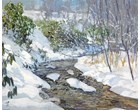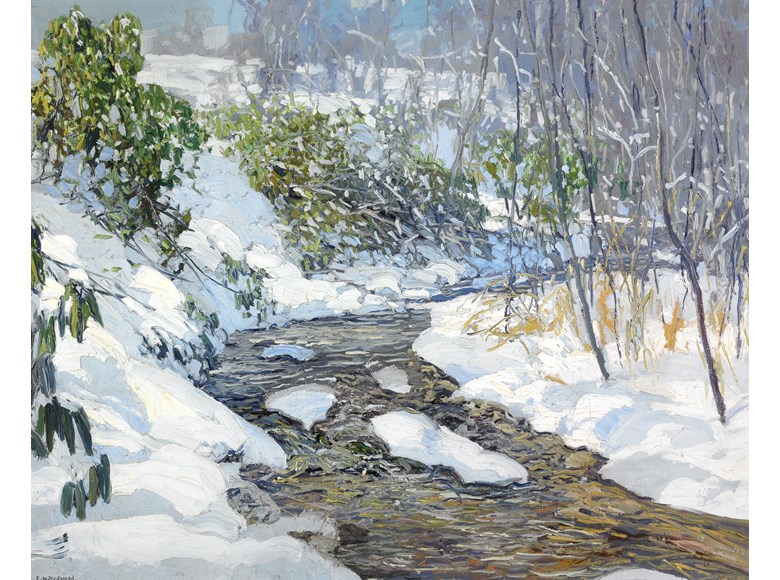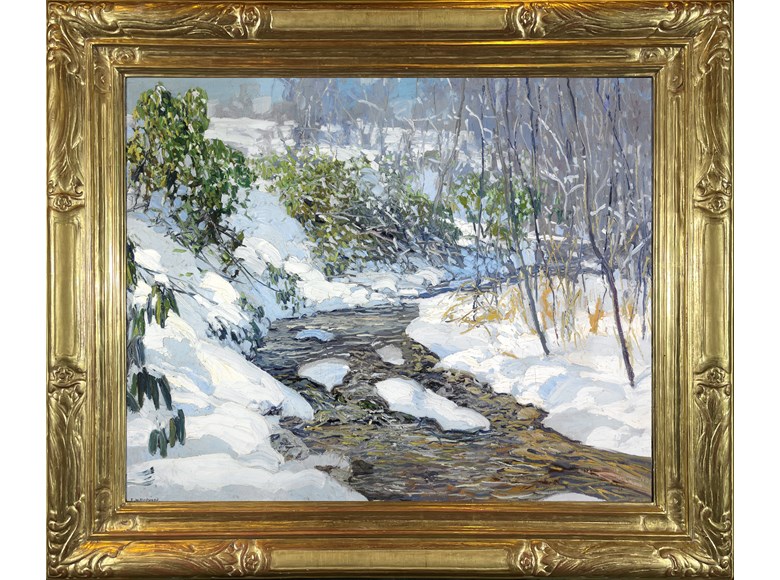 BACK TO GALLERY
BACK TO GALLERY
Avery Galleries
Edward Redfield
Easter Morning
Signed lower left: E. W. Redfield.
26 x 32 inches (66 x 81.3 cm)
description
Edward Redfield's early artistic training took place at the Pennsylvania Academy of the Fine Arts from 1885 to 1889. While there he studied with Thomas Anschutz, James Kelley, and Thomas Hovenden. Robert Henri was a fellow classmate, and the two men developed a strong friendship, eventually traveling to Paris together in 1889. It was in France that Redfield's passion for landscape painting really began. There he was first exposed to working en plein air, or outdoors, which became central to his artistic practice. Upon his return to the States, Redfield and his family moved to Center Bridge in Bucks County, Pennsylvania, not far from New Hope. He became a leading member of the American Impressionist artists' colony there. Redfield was instrumental in establishing the creative and stylistic bedrock of the movement. His style was marked by an intense absorption in the act of painting. He became best known for the sense of energy in his works as well as his powers of observation and his ability to capture the American landscape with vigor and originality.
Easter Morning displays all of the vigor and authenticity for which critics and collectors alike hailed Redfield. The sense of energy and physicality of the painting, most notable in the heavy impasto of the vigorous brushwork, allow the viewer to experience the landscape as if he or she were actually in it. That Redfield painted the landscape in clear and immediate terms is what made his work such a success. As the advancing tide of industrialization threatened to alter the very look of the American countryside, Redfield's paintings, which were beautiful and bright and depicted very recognizable locales, brought people closer to nature itself. Yet it is important to remember that it was not Redfield's intention to assign spiritual or even poetic meaning to the scenes he painted. Easter Morning, like all of his mature works, remains, in both effect and sentiment, on the surface. The tactility of the canvas relates to how Redfield saw it; that is, as a vast array of color, texture, and light. His talent for finding picturesque views of specific places and infusing them with great life and originality is what makes paintings like this one quintessentially American.
Easter Morning displays all of the vigor and authenticity for which critics and collectors alike hailed Redfield. The sense of energy and physicality of the painting, most notable in the heavy impasto of the vigorous brushwork, allow the viewer to experience the landscape as if he or she were actually in it. That Redfield painted the landscape in clear and immediate terms is what made his work such a success. As the advancing tide of industrialization threatened to alter the very look of the American countryside, Redfield's paintings, which were beautiful and bright and depicted very recognizable locales, brought people closer to nature itself. Yet it is important to remember that it was not Redfield's intention to assign spiritual or even poetic meaning to the scenes he painted. Easter Morning, like all of his mature works, remains, in both effect and sentiment, on the surface. The tactility of the canvas relates to how Redfield saw it; that is, as a vast array of color, texture, and light. His talent for finding picturesque views of specific places and infusing them with great life and originality is what makes paintings like this one quintessentially American.








 SEND AN EMAIL
SEND AN EMAIL
 (610) 896-0680
(610) 896-0680